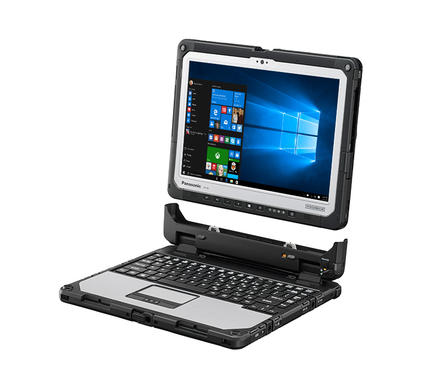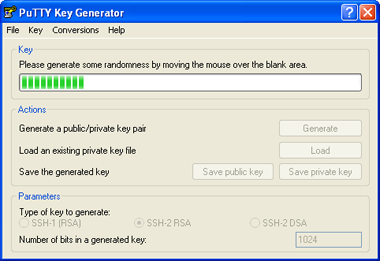- Public Key Generation In Windows 8
- Sftp Public Key Generation Windows
- Generate Public Key On Windows
- Windows Public Key Location
- Windows Public Key Generation
-->
To sign an assembly with a strong name, you must have a public/private key pair. This public and private cryptographic key pair is used during compilation to create a strong-named assembly. You can create a key pair using the Strong Name tool (Sn.exe). Key pair files usually have an .snk extension.
Note
Once the progress bar becomes full, the actual key generation computation takes place. This may take from several seconds to several minutes. When complete, the public key should appear in the Window. You can now specify a passphrase for the key. You should save at least the private key by clicking Save private key. May 05, 2019 When the generation process is complete, the public key will be displayed in the Window. Optionally, if you want to use a passphrase type it in the “Key passphrase” field and confirm the same passphrase in the “Confirm passphrase” field.
In Visual Studio, the C# and Visual Basic project property pages include a Signing tab that enables you to select existing key files or to generate new key files without using Sn.exe. In Visual C++, you can specify the location of an existing key file in the Advanced property page in the Linker section of the Configuration Properties section of the Property Pages window. The use of the AssemblyKeyFileAttribute attribute to identify key file pairs was made obsolete beginning with Visual Studio 2005.
Public Key Generation In Windows 8
Create a key pair
To create a key pair, at a command prompt, type the following command:
sn –k <file name>
In this command, file name is the name of the output file containing the key pair.
The following example creates a key pair called sgKey.snk.
If you intend to delay sign an assembly and you control the whole key pair (which is unlikely outside test scenarios), you can use the following commands to generate a key pair and then extract the public key from it into a separate file. First, create the key pair:
Next, extract the public key from the key pair and copy it to a separate file:
Sftp Public Key Generation Windows
Once you create the key pair, you must put the file where the strong name signing tools can find it.
When signing an assembly with a strong name, the Assembly Linker (Al.exe) looks for the key file relative to the current directory and to the output directory. When using command-line compilers, you can simply copy the key to the current directory containing your code modules.
If you are using an earlier version of Visual Studio that does not have a Signing tab in the project properties, the recommended key file location is the project directory with the file attribute specified as follows:
See also
This article explains public key authentication in general. Pirate bay. You may want to see guide to setting up public key authentication instead.
Do not confuse your user key pair used for authentication with host public key verification. Learn about all SSH key types.

Public key authentication is an alternative means of identifying yourself to a login server, instead of typing a password. It is more secure and more flexible, but more difficult to set up.
In conventional password authentication, you prove you are who you claim to be by proving that you know the correct password. The only way to prove you know the password is to tell the server what you think the password is. This means that if the server has been hacked, or spoofed, an attacker can learn your password.
Public key authentication solves this problem. You generate a key pair, consisting of a public key (which everybody is allowed to know) and a private key (which you keep secret and do not give to anybody). The private key is able to generate signatures. A signature created using your private key cannot be forged by anybody who does not have that key; but anybody who has your public key can verify that a particular signature is genuine.
Generate Public Key On Windows
So you generate a key pair on your own computer, and you copy the public key to the server under a certain name. Then, when the server asks you to prove who you are, WinSCP can generate a signature using your private key. The server can verify that signature (since it has your public key) and allow you to log in. Now if the server is hacked or spoofed, the attacker does not gain your private key or password; they only gain one signature. And signatures cannot be re-used, so they have gained nothing.

There is a problem with this: if your private key is stored unprotected on your own computer, then anybody who gains access to that will be able to generate signatures as if they were you. So they will be able to log in to your server under your account. For this reason, your private key is usually encrypted when it is stored on your local machine, using a passphrase of your choice. In order to generate a signature, WinSCP must decrypt the key, so you have to type your passphrase.
Windows Public Key Location
This can make public-key authentication less convenient than password authentication: every time you log in to the server, instead of typing a short password, you have to type a longer passphrase. One solution to this is to use an authentication agent, a separate program which holds decrypted private keys and generates signatures on request. WinSCP can use PuTTY’s authentication agent, called Pageant. When you begin a Windows session, you start Pageant and load your private key into it (typing your passphrase once). For the rest of your session, you can start WinSCP any number of times and Pageant will automatically generate signatures without you having to do anything. When you close your Windows session, Pageant shuts down, without ever having stored your decrypted private key on disk. Many people feel this is a good compromise between security and convenience.
Advertisement
There is more than one public-key algorithm available. The most common are RSA and ECDSA, but others exist, notably DSA (otherwise known as DSS), the USA’s federal Digital Signature Standard.1
To generate a key pair, use the PuTTYgen application.
You can start PuTTYgen directly from Authentication page of Advanced Site Settings dialog. If you start PuTTYgen this way, WinSCP will automatically pick up the generated key.
Eset nod32 antivirus keygen license key generator 2017 online. Eset NOD32 Serial Generator Keygen. Thebesthack Crack & Keygen, Hacks / Cheats, Other Software. Eset NOD32 Serial Generator Keygen. Today I present Eset NOD32 Serial Generator Keygen. Program will create a valid key.This probably looking for.
Different file formats are used to store SSH-2 private keys. WinSCP supports PuTTY format, as authors of PuTTY claim that it is the best one.
WinSCP also recognizes (but does not accept) the other two formats (OpenSSH and ssh.com), and it can convert the keys to PuTTY format for you. To convert the key file you can also use /keygen command-line switch or PuTTYgen application.
Windows Public Key Generation
- The text is copy of PuTTY User Manual or was inspired by it.Back